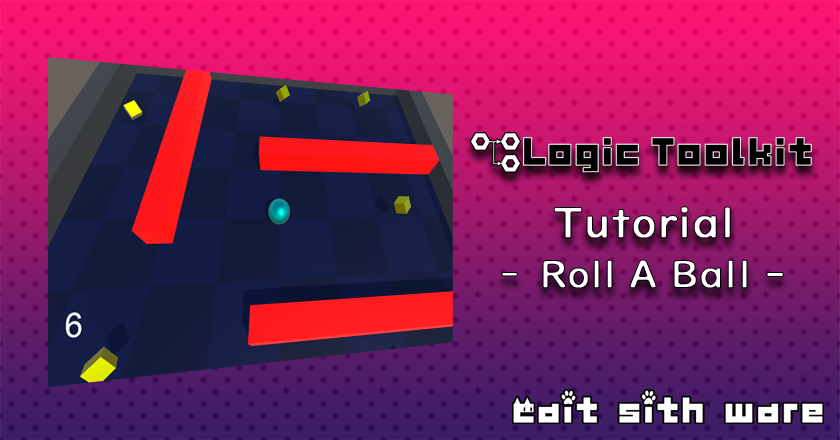
Overview
This article explains how to create a simple 3D ball rolling game using the Logic Toolkit.
The finished product will be the same as the sample “Roll A Ball” included with the Logic Toolkit.
Prerequisites
- Basic usage of Unity Editor
What you’ll learn
- Use the Logic Behavior component to control object behavior
- Use the Logic Asset and Logic Player components to reuse common behaviors
- The member access script generation function allows you to create behaviors without coding
- Use the Event node, Action node, Compute node, and Branch node
- Blackboard variables
Shooting environment
The images and videos in this tutorial were taken in the following environment.
| OS | Windows 11 |
| Unity | 6000.0.0f1 |
| Logic Toolkit | 1.2.0 |
| Theme | Dark |
| Language | English |
- Only the minimum windows in Unity are photographed.
- Explanations on adjusting the placement of the created nodes are omitted.
Preparing the Project
Create a project to demonstrate the tutorial.
Create a project
Create a project for the tutorial.
| Project Name | LogicToolkit_Tutorial_RollABall |
| Template | 3D (Built-In Render Pipeline) |
If you haven’t already downloaded the template, please do so.
For information on how to create a project, see “Add and remove projects in the Unity Hub” in the Unity manual.
Introducing the Logic Toolkit
Introduce the Logic Toolkit to your project.
For information on installing the Logic Toolkit, please refer to the “Installation steps” in the Logic Toolkit manual.
You can also try the trial version before you buy.
Importing the tutorial packages
We have prepared a scene package with all the necessary objects.
Download “Tutorial_RollABall” LogitToolkit_Tutorial_RollABall.unitypackage – Downloaded 854 times – 71.69 KBDownload the package from the link above and import it into your project.
For information on how to import a package, see “Importing local asset packages” in the Unity manual.
Open a scene
- Open Assets/RollABall/Scenes/RollABall Scene
Each step
From here, we will create the behavior of individual objects.
The pages are divided, so please work from the top to the bottom.
